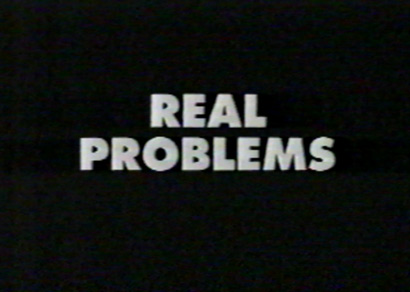science
and drew him down to me so he could feel my breasts all perfume
The sense of smell is one of our most powerful connections to the physical world. Our noses contain hundreds of different scent receptors that allow us to distinguish between odours. When you smell a rose or a pot of beef stew, the brain is responding to scent molecules that have wafted into your nose and locked on to these receptors. Only certain molecules fit specific receptors, and when they slot together, like a key in a lock, this triggers changes in cells. In the case of scent receptors, specialised neurons send messages to the brain so we know what we have sniffed. […]
In the last ten years, however, reports have trickled in from bemused biologists that these receptors, as well as similar ones usually found on taste buds, crop up all over our bodies.
Take it easy, Gramps! We gotta stay here ’til Evinrude brings us word from the mice.
Sound waves with frequencies just above human hearing can levitate tiny particles and liquid droplets and even move them around, a team of engineers has demonstrated. […]
In the new research, the team […] uses the setup to lift and spin a toothpick. Previously, no one had been able to control objects larger than a few millimeters in diameter.
‘If I have made myself clear then you have misunderstood me.’ –Greenspan
Standard IQ tests are problematic on many levels — not least, because they do very little to tell us about the quality of our thinking. Looking to overcome this oversight, psychologist Keith Stanovich has started to work on the first-ever Rationality Quotient test. […]
I coined the term dysrationalia — an analogue of the word dyslexia — in the early-1990’s in order to draw attention to what is missing in IQ tests. I define dysrationalia as the inability to think and behave rationally despite having adequate intelligence. […] Here are some irrational thinking tendencies to consider:
▪ Physicians choose less effective medical treatments
▪ People fail to accurately assess risks in their environment
▪ Information is misused in legal proceedings
▪ Millions of dollars are spent on unneeded projects by government and private industry
▪ Parents fail to vaccinate their children
▪ Unnecessary surgery is performed
▪ Animals are hunted to extinction
▪ Billions of dollars are wasted on quack medical remedies
▪ Costly financial misjudgments are made
‘If you want to know yourself, just look how others do it.’ –Schiller
The objective of this study was to determine test characteristics (i.e., intra- and interobserver variability, intraassay variability, sensitivity, and specificity) of an evaluation of odor from vaginal discharge (VD) of cows in the first 10 days postpartum conducted by olfactory cognition and an electronic device, respectively. […]
The study revealed a considerable subjectivity of the human nose concerning the classification into healthy and sick animals based on the assessment of vaginal discharge.
Almost as long as flowers, which daily die

High-resolution mapping of the epigenome has discovered unique patterns that emerge during the generation of brain circuitry in childhood.
While the ‘genome’ can be thought of as the instruction manual that contains the blueprints (genes) for all of the components of our cells and our body, the ‘epigenome’ can be thought of as an additional layer of information on top of our genes that change the way they are used. […]
The frontal cortex is made up of distinct types of cells, such as neurons and glia, which each perform very different functions. However, we know that these distinct types of cells in the brain all contain the same genome sequence; the A, C, G and T ‘letters’ of the DNA code that provides the instructions to build the cell; so how can they each have such different identities?
The answer lies in a secondary layer of information that is written on top of the DNA of the genome, referred to as the ‘epigenome’. One component of the epigenome, called DNA methylation, consists of small chemical tags that are placed upon some of the C letters in the genome. These tags alert the cell to treat the tagged DNA differently and change the way it is read, for example causing a nearby gene to be turned off.
photo { Ren-Hang }
Yes. I have personally torched all the evidence that proves that you are you.
In August 2009, scientists in Israel raised serious doubts concerning the use of DNA by law enforcement as the ultimate method of identification. In a paper published in the journal Forensic Science International: Genetics, the Israeli researchers demonstrated that it is possible to manufacture DNA in a laboratory, thus falsifying DNA evidence. The scientists fabricated saliva and blood samples, which originally contained DNA from a person other than the supposed donor of the blood and saliva.
The researchers also showed that, using a DNA database, it is possible to take information from a profile and manufacture DNA to match it, and that this can be done without access to any actual DNA from the person whose DNA they are duplicating. The synthetic DNA oligos required for the procedure are common in molecular laboratories.
The New York Times quoted the lead author on the paper, Dr. Daniel Frumkin, saying, “You can just engineer a crime scene… any biology undergraduate could perform this.”
Dr. Frumkin perfected a test that can differentiate real DNA samples from fake ones. His test detects epigenetic modifications, in particular, DNA methylation. Seventy percent of the DNA in any human genome is methylated, meaning it contains methyl group modifications within a CpG dinucleotide context. Methylation at the promoter region is associated with gene silencing. The synthetic DNA lacks this epigenetic modification, which allows the test to distinguish manufactured DNA from original, genuine, DNA.
It is unknown how many police departments, if any, currently use the test. No police lab has publicly announced that it is using the new test to verify DNA results.
Clear the way for the prophets of rage

Just seeing a list of negative words for a few seconds will make a highly anxious or depressed person feel worse, and the more you ruminate on them, the more you can actually damage key structures that regulate your memory, feelings, and emotions. You’ll disrupt your sleep, your appetite, and your ability to experience long-term happiness and satisfaction.
If you vocalize your negativity, or even slightly frown when you say “no,” more stress chemicals will be released, not only in your brain, but in the listener’s brain as well. The listener will experience increased anxiety and irritability, thus undermining cooperation and trust. In fact, just hanging around negative people will make you more prejudiced toward others. […]
Negative thinking is also self perpetuating, and the more you engage in negative dialogue—at home or at work—the more difficult it becomes to stop.
quote { Dostoyevsky, The Idiot, 1868-1869 }
If life was always like that. Sit around under sunshades.
Recently more human beings have been dying by suicide annually than by murder and warfare combined. Despite the progress made by science, medicine and mental-health care in the 20th century — the sequencing of our genome, the advent of antidepressants, the reconsidering of asylums and lobotomies — nothing has been able to drive down the suicide rate in the general population. […] Worldwide, roughly one million people kill themselves every year. Last year, more active-duty U.S. soldiers killed themselves than died in combat; their suicide rate has been rising since 2004. […] At first, the stress of combat seemed to be the obvious reason for the jump in military suicides — until researchers realized that the rate has also risen among soldiers who were never deployed. […]
Our understanding of how suicidal thinking progresses, or how to spot and halt it, is little better now than it was two and a half centuries ago, when we first began to consider suicide a medical rather than philosophical problem. […]
Trying to study what people are thinking before they try to kill themselves […] Researchers can’t ethically induce suicidal thinking in the lab and watch it develop. Uniquely human, it can’t be observed in other species. And it is impossible to interview anyone who has died by suicide. To understand it, psychologists have most often employed two frustratingly imprecise methods: they have investigated the lives of people who have killed themselves, and any notes that may have been left behind, looking for clues to what their thinking might have been, or they have asked people who have attempted suicide to describe their thought processes — though their mental states may differ from those of people whose attempts were lethal and their recollections may be incomplete or inaccurate. Such investigative methods can generate useful statistics and hypotheses about how a suicidal impulse might start and how it travels from thought to action, but that’s not the same as objective evidence about how it unfolds in real time.
‘Learning many things does not teach understanding.’ –Heraclitus
Another power law […] is Benford’s Law, which states that the distribution of digits in a lot of data are not even, but power law distributed. For example, in base 10, the number one should, all things being equal, appear 10% of the time. But in many data sources one appears around 30% of the time. This fact is actually used to help detect fraud in, for example, tax returns.
There is (as I shall show in what follows) another, third kind, which we shall call intuitive knowledge

There’s such a blizzard of sensory information out there, the brain would be overwhelmed if it weren’t for a spotlight process of selective attention that allows us to focus. This means that once we’re tuned into certain aspects of the environment, we’re left blind to events outside of our selective attention - a phenomenon called “inattentional blindness.”
Central to this line of reasoning is the idea of attention as a finite resource. It’s because our processing powers are depleted by the focus of our attention that we’re left blind to that which we ignore. However, a new study challenges the finite resource element of this story. Baruch Eitam and his colleagues say that irrelevance is enough to render information invisible even if we have plenty of resources available for processing that information. It brings a new spin to our understanding of inattentional blindness that’s not just about attentional load but also about salience and motivation.
art { Cy Twombly, Untitled, 1968 }
Arrividerci cock poppy

Sperm cells have been created from a female human embryo in a remarkable breakthrough that suggests it may be possible for lesbian couples to have their own biological children.
British scientists who had already coaxed male bone marrow cells to develop into primitive sperm cells have now repeated the feat with female embryonic stem cells.
The University of Newcastle team that has achieved the feat is now applying for permission to turn the bone marrow of a woman into sperm which, if successful, would make the method more practical than with embryonic cells.
It raises the possibility of lesbian couples one day having children who share both their genes as sperm created from the bone marrow of one woman could be used to fertilise an egg from her partner.
art { Georges Hugnet }
What’s to be expected is 3 minus
The unavoidable truth is that sea levels are rising and Miami is on its way to becoming an American Atlantis. It may be another century before the city is completely underwater (though some more-pessimistic scientists predict it could be much sooner), but life in the vibrant metropolis of 5.5 million people will begin to dissolve much quicker, most likely within a few decades. […]
South Florida is not the only place that will be devastated by sea-level rise. London, Boston, New York and Shanghai are all vulnerable, as are low-lying underdeveloped nations like Bangladesh. But South Florida is uniquely screwed, in part because about 75 percent of the 5.5 million people in South Florida live along the coast. And unlike many cities, where the wealth congregates in the hills, southern Florida’s most valuable real estate is right on the water.
related { Global warming has slowed. The rate of warming of over the past 15 years has been lower than that of the preceding 20 years. There is no serious doubt that our planet continues to heat, but it has heated less than most climate scientists had predicted. | The Economist }
‘There are a lot of ways that you can start your day, but the most important way is with prayer.’ –Will Ferrell

Infants seem unable to ‘think to themselves’ and instead ‘talk to themselves‘ when solving problems, usually vocalising the most tricky or novel aspects of the situation. As we grow, we develop the ability to internalise this speech, and can eventually have a purely internal monologue.
Understanding inner speech is also important because it becomes distorted in psychotic disorders such as schizophrenia.
People with psychosis can experience effects like ‘thought insertion’, where they experience external thoughts being inserted into their stream of consciousness, or ‘thought withdrawal’, where thoughts seem to be removed from the mind.
This suggests that there must be something that the brain uses to identify thoughts as self-generated, and that this perhaps breaks down in psychosis, so we can have the uncanny experience of having thoughts that don’t seem to be our own.
Thank you for curing me of my ridiculous obsession with love
For a long time, memories were thought of as the biochemical equivalent of 3 x 5 cards kept in a file cabinet. And the words on the cards were written in ink, scientists thought, because, once created and stored in the brain, a memory didn’t change. It might be vivid, but it was static, as fixed as a photograph of a remembered moment.
But in recent years, that theory has been flipped on its head. Now, leaders in memory research don’t think that’s the way the mind works at all. Instead, they’ve come to believe that memories actually are fluid things, subject to alteration every time they’re retrieved. When a long-term memory is recalled, it becomes temporarily fungible and goes through a rebuilding process known as reconsolidation. Which suggests that memories, even terrible ones, can be changed during that period when they’re once again unstable.
Several studies published last fall reinforced this notion. One, from researchers at Uppsala University in Sweden, found that a fear memory could be neutralized if the reconsolidation process is disrupted before the memory can solidify. Another, carried out by scientists at the University of St. Andrews in Scotland, concluded that even if a memory isn’t truly erased, it can be made to feel less personal or painful.
{ What Scientists Now Know About Repairing Memories | Smithsonian | Continue reading }
It will be: Spectacular Spectacular

The quality of a performance does not drive the amount of applause an audience gives, a study suggests.
Instead scientists have found that clapping is contagious, and the length of an ovation is influenced by how other members of the crowd behave.
They say it takes a few people to start clapping for applause to spread through a group, and then just one or two individuals to stop for it to die out.
What I will do is remember you
She explained how recent research, including her own, has shown that memories are not unchanging physical traces in the brain. Instead, they are malleable constructs that may be rebuilt every time they are recalled. The research suggests, she said, that doctors (and psychotherapists) might be able to use this knowledge to help patients block the fearful emotions they experience when recalling a traumatic event, converting chronic sources of debilitating anxiety into benign trips down memory lane.
Thus the unfacts, did we possess them, are too imprecisely few to warrant our certitude

What is an electron? […]
Danish physicist Niels Bohr’s answer, in 1927, epitomized his beloved concept of complementarity: in some circumstances electrons are best described as particles, with definite positions; in others as waves, with definite momenta. Either description is valid and useful, yet according to Heisenberg’s uncertainty principle they are mutually exclusive, as positions and momenta cannot be known accurately at the same time. Each depiction captures an aspect of the electron’s nature, but neither exhausts it.
Modern quantum theory reinforces Bohr’s conclusion that what you see depends on how you choose to look. […]
Theoretical calculations have become intricate, now including fluctuations in fluctuations in fluctuations. […]
Attempts to pin down an electron’s position more accurately than this require, according to the uncertainty principle, injecting so much energy into the electron that additional electrons and anti-electrons get produced, confusing the issue.
related { First particle containing four quarks is confirmed }
fiberglass and pigment { Anish Kapoor, Void, 1989 }
Panther power on the hour from the rebel to you
Why do humans menstruate, when most animals don’t? When you shake the tree of life, you find that only a handful of mammals aside from us – primates, a small number of bat species, and the elephant shrew – have opted for the monthly bleed.
Evolution is often viewed in terms of a cost-benefit ledger: if something is costly, it must have some benefit. Women lose over half a standard glass of wine’s worth in iron-rich blood and tissue – about 90 millilitres – each time they menstruate, so the process does seem quite costly. And in the predator-filled environs of our early ancestors, leaving a trail of blood was presumably not advantageous.
So how did menstruation arise? Over recent decades, evolutionary biologists have come up with three key theories to explain human menstruation.















